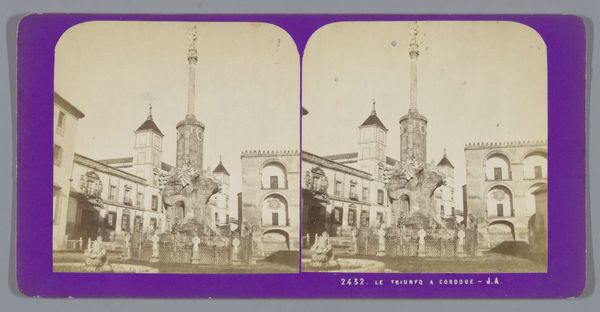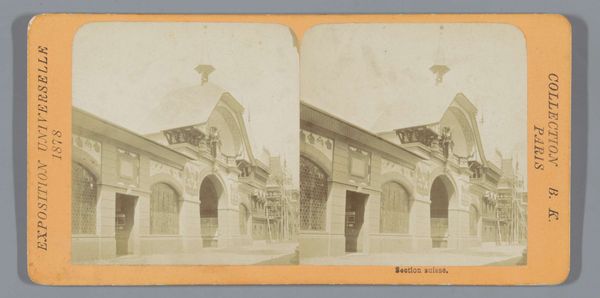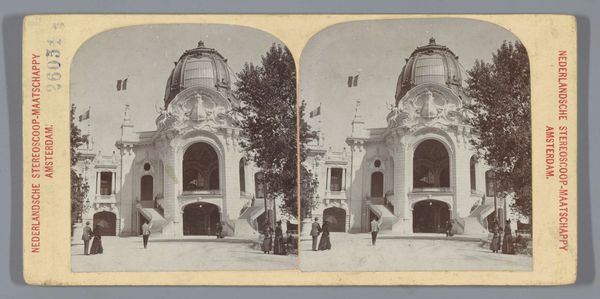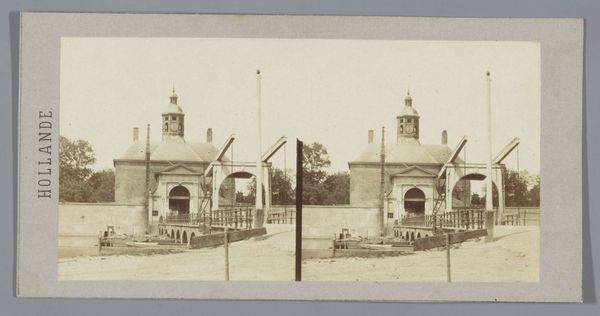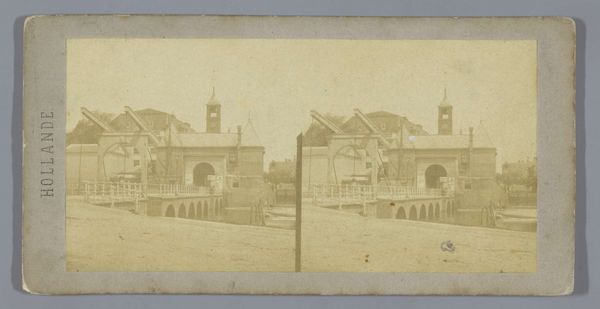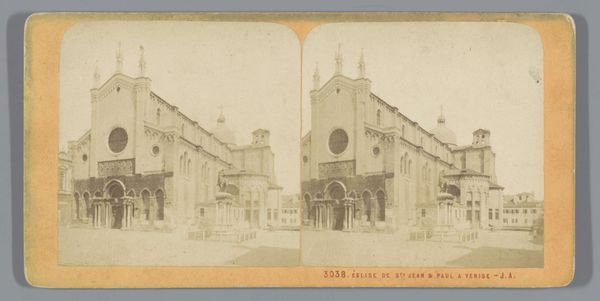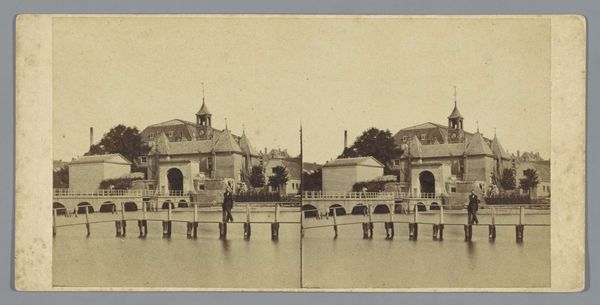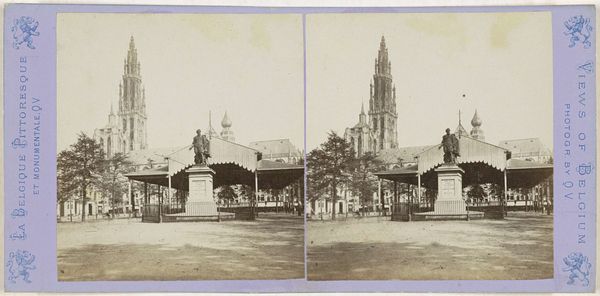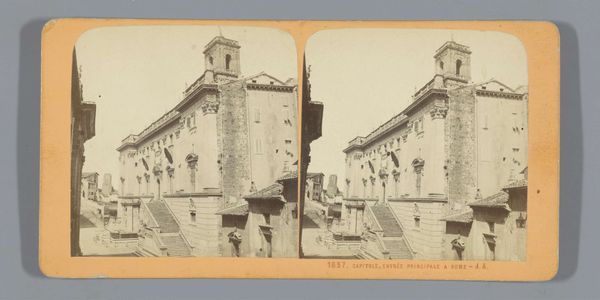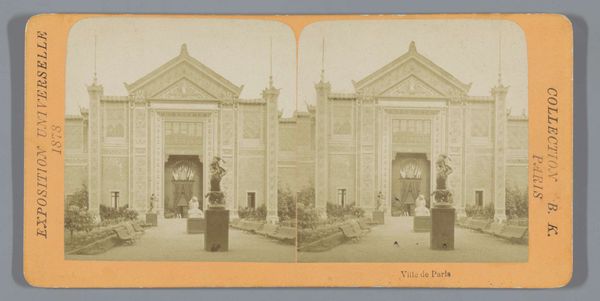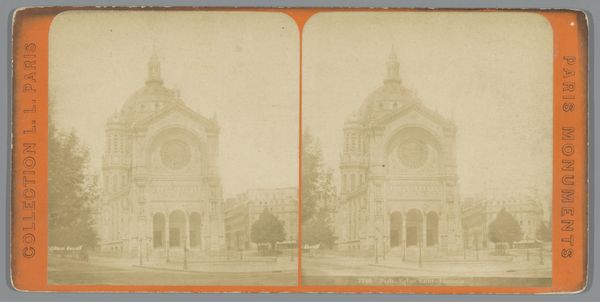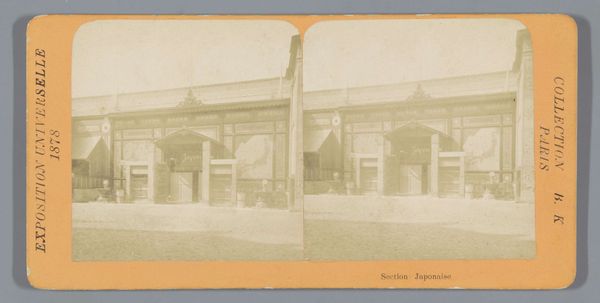
Japanse boerderij op de Wereldtentoonstelling van 1878, met op de achtergrond het Palais du Trocadéro 1878
0:00
0:00
albumen-print, photography, albumen-print, architecture
#
albumen-print
#
photography
#
coloured pencil
#
cityscape
#
albumen-print
#
architecture
Dimensions: height 87 mm, width 176 mm
Copyright: Rijks Museum: Open Domain
Curator: This albumen print from 1878, attributed to Adolphe Block, is titled "Japanese Farm at the World Exhibition of 1878, with the Palais du Trocadéro in the Background," and is housed here at the Rijksmuseum. Editor: Immediately, I’m struck by the contrast of textures and forms. You’ve got the intricate, almost lace-like quality of the Trocadero in the background versus the simpler, rougher hewn shapes of the Japanese farm structures in the foreground. It’s a very deliberate visual arrangement, almost staged. Curator: Precisely! This image provides a fascinating glimpse into the phenomenon of Japonisme. It embodies the European fascination with Japanese aesthetics at that time, fueled by exhibitions like the World's Fair. What kind of symbolic tension do you read in the composition, considering Japonisme's cultural role? Editor: Well, placing the rural Japanese structure, presumably built using traditional techniques and materials, in front of a grand building showcasing modern construction screams about global power dynamics at play. Someone must have overseen all of it for visitors and also for the camera lens of the photographer. Curator: Yes, absolutely. It highlights the appropriation and almost performative aspect of cultural exchange. The farm becomes a spectacle, a symbol divorced from its original context and loaded with European interpretations of Japan. Do the parasols imply certain codes, perhaps of power, class, or exotification, given the cultural encounter that is being visually recorded here? Editor: The parasols definitely add to the exoticization; however, I am more fascinated by the materiality and labor embedded here. These farm structures, for example, are clearly fabricated, possibly on-site with quickly sourced and prepared materials. And that building in the background looks very solid! What a fascinating statement this work is making, intentionally or not, about labor and material value in these cultures! Curator: Indeed. This visual juxtaposition presents multiple interpretations on progress and what it even means. Editor: Looking closer now, the choice of albumen print itself also plays a role—that slightly ethereal quality it lends makes the scene feel like a fleeting glimpse, further romanticizing the idea of this "Japanese farm." Curator: An observation that emphasizes the transience of the scene as much as our perspective on a global crossroad, doesn’t it? Thank you! Editor: My pleasure; what a curious thing art can show.
Comments
No comments
Be the first to comment and join the conversation on the ultimate creative platform.
